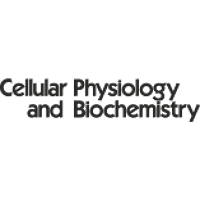 “Both types of cannabinoid receptors – CB1 and CB2 – regulate brain functions relating to addictive drug-induced reward and relapse. CB1 receptor antagonists and CB2 receptor agonists have anti-addiction efficacy, in animal models, against a broad range of addictive drugs.
“Both types of cannabinoid receptors – CB1 and CB2 – regulate brain functions relating to addictive drug-induced reward and relapse. CB1 receptor antagonists and CB2 receptor agonists have anti-addiction efficacy, in animal models, against a broad range of addictive drugs.
Δ9 -Tetrahydrocannabivarin (Δ9 -THCV) – a cannabis constituent – acts as a CB1 antagonist and a CB2 agonist. Δ8 -Tetrahydrocannabivarin (Δ8 -THCV) is a Δ9 -THCV analogue with similar combined CB1 antagonist/CB2agonist properties.
KEY RESULTS:
Δ8 -THCV significantly attenuated intravenous nicotine self-administration, and both cue-induced and nicotine-induced relapse to nicotine-seeking behavior in rats. Δ8 -THCV also significantly attenuated nicotine-induced conditioned place preference and nicotine withdrawal in mice.
CONCLUSIONS AND IMPLICATIONS:
We conclude that Δ8 -THCV may have therapeutic potential for the treatment of nicotine dependence. We also suggest that tetrahydrocannabivarins should be tested for possible anti-addiction efficacy in a broader range of preclinical animal models, against other addictive drugs, and eventually in humans.”
https://www.ncbi.nlm.nih.gov/pubmed/31454413
https://bpspubs.onlinelibrary.wiley.com/doi/abs/10.1111/bph.14844

 “Medical and recreational cannabis use is increasing significantly, but its impacts on oral health remains unclear.
“Medical and recreational cannabis use is increasing significantly, but its impacts on oral health remains unclear. “The biological effects of endocannabinoid system are mediated by two types of receptors,
“The biological effects of endocannabinoid system are mediated by two types of receptors,  “Despite the growing knowledge on the functional relationship between an altered endocannabinoid (eCB) system and development of anorexia nervosa (AN), to date no studies have investigated the central eCB tone in the activity-based anorexia (ABA) model that reproduces key aspects of human AN.
“Despite the growing knowledge on the functional relationship between an altered endocannabinoid (eCB) system and development of anorexia nervosa (AN), to date no studies have investigated the central eCB tone in the activity-based anorexia (ABA) model that reproduces key aspects of human AN. “The Endocannabinoid (eCB) system and its role in many physiological and pathological conditions is well described and accepted, and includes cardiovascular disorders. However, the eCB system has been expanded to an “-ome”; the endocannabinoidome (eCBome) that includes endocannabinoid-related mediators, their protein targets and metabolic enzymes, many of which significantly impact upon cardiometabolic health. These recent discoveries are here summarized with a special focus on their potential involvement in atherosclerosis. We described the role of classical components of the eCB system (eCBs, CB1 and CB2 receptors) and eCB-related lipids, their regulatory enzymes and molecular targets in atherosclerosis. Furthermore, since increasing evidence points to significant cross-talk between the eCBome and the gut microbiome and the gut microbiome and atherosclerosis, we explore the possibility that a gut microbiome – eCBome axis has potential implications in atherosclerosis.”
“The Endocannabinoid (eCB) system and its role in many physiological and pathological conditions is well described and accepted, and includes cardiovascular disorders. However, the eCB system has been expanded to an “-ome”; the endocannabinoidome (eCBome) that includes endocannabinoid-related mediators, their protein targets and metabolic enzymes, many of which significantly impact upon cardiometabolic health. These recent discoveries are here summarized with a special focus on their potential involvement in atherosclerosis. We described the role of classical components of the eCB system (eCBs, CB1 and CB2 receptors) and eCB-related lipids, their regulatory enzymes and molecular targets in atherosclerosis. Furthermore, since increasing evidence points to significant cross-talk between the eCBome and the gut microbiome and the gut microbiome and atherosclerosis, we explore the possibility that a gut microbiome – eCBome axis has potential implications in atherosclerosis.” “Kidney ischemia reperfusion (IR) injury is an important health problem resulting in acute renal failure. After IR, the inflammatory and apoptotic process is triggered.
“Kidney ischemia reperfusion (IR) injury is an important health problem resulting in acute renal failure. After IR, the inflammatory and apoptotic process is triggered. “Phytocannabinoids are unique terpenophenolic compounds predominantly produced in the glandular trichomes of the cannabis plant (Cannabis sativa L.). The delta-9- tetrahydrocannabinol (THC) is the main active constituent responsible for the plant’s psychoactive effect and, together with the non- psychoactive cannabidiol (CBD), the most investigated naturally occurring cannabinoid.
“Phytocannabinoids are unique terpenophenolic compounds predominantly produced in the glandular trichomes of the cannabis plant (Cannabis sativa L.). The delta-9- tetrahydrocannabinol (THC) is the main active constituent responsible for the plant’s psychoactive effect and, together with the non- psychoactive cannabidiol (CBD), the most investigated naturally occurring cannabinoid. “Parkinson’s disease (PD) is a neurodegenerative disease and its characteristic is the progressive degeneration of dopaminergic neurons within the substantia nigra (SN) of the midbrain. There is hardly any clinically proven efficient therapeutics for its cure in several recent preclinical advances proposed to treat PD.
“Parkinson’s disease (PD) is a neurodegenerative disease and its characteristic is the progressive degeneration of dopaminergic neurons within the substantia nigra (SN) of the midbrain. There is hardly any clinically proven efficient therapeutics for its cure in several recent preclinical advances proposed to treat PD. “Among the assisted reproductive techniques, the in vitro maturation of oocytes (IVM) is less developed than other techniques, but its implementation would entail a qualitative advance.
“Among the assisted reproductive techniques, the in vitro maturation of oocytes (IVM) is less developed than other techniques, but its implementation would entail a qualitative advance.